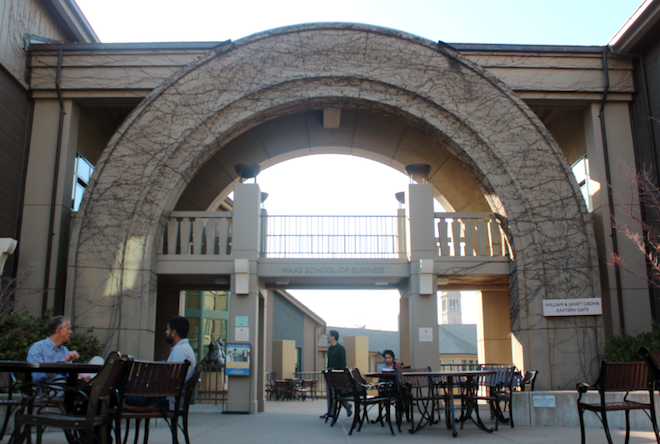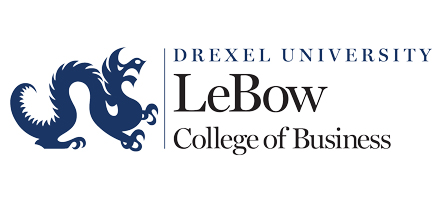
The UC-Berkeley Haas part-time MBA program was named best in the country by U.S. News & World Report for the fifth straight year in 2017.
Just because part-time MBA students at UC-Berkeley’s Haas School of Business meet only on evenings and weekends doesn’t mean their degree is worth any less than those who finish in two years, says Jamie Breen, Haas assistant dean. Graduates of the part-time program have learned the same materials from the same faculty and are Haas MBAs through and through, Breen says.
Most importantly, she adds, that’s just how employers will see them.
This weekend (July 28-30), the 253 newest members of the Haas Evening and Weekend MBA program will gather for orientation on the campus of the Northern California school, meeting second- and third-year EWMBA students and taking part in team-building (read: fun and lighthearted) exercises while familiarizing themselves with a campus they will see for much of the next three to five years. Though most students are regional, hailing from California or elsewhere on the West Coast, many have seen little of the UC-Berkeley campus before, and the “WE Launch” orientation is a chance for them to connect with the culture of the school.
“One of the things that we have that is unique is the fact that we have this very strong culture,” says Rahul Sampat, Berkeley Haas admissions director. “We really try to measure for that when we have students apply and in the interview process as well. We trying to bring in folks that have at least one of the school’s four defining principles” — Question the Status Quo, Confidence Without Attitude, Students Always, Beyond Yourself — “but most of them exemplify most of them.”
FLOATING ABOVE, AND LEADING THE WAY

Rahul Sampat, Berkeley Haas admissions director
The Berkeley Haas EWMBA program has been ranked No. 1 by U.S. News & World Report for the last five years (2012-2017). The ranking is mostly based on surveys of business school deans and directors at part-time MBA programs, with scores rounded out by other factors including test scores, GPA, student work experience, and enrollment. The latter accounts for only 15% of a school’s score but is hugely important as measure of a program’s health, because while part-time programs are still how a majority of MBA seekers get their degrees, part-time enrollment has been dropping for many years — even at the elite programs.
Berkeley Haas has floated above the enrollment sag, with just over 800 total enrolled students now compared to just under 800 three years ago. The school had 255 new students in 2015, 252 in 2016, and 253 this fall, Sampat says — steady as she goes. In just about every other metric, the business school in the heart of the jewel of the California university system is handily surpassing its peers. Its part-time program boasts the highest average GMAT score, 694, of any of the 301 schools in the U.S. News ranking, with the next closest schools 16 points back (Chicago Booth and UCLA Anderson tied at 678). At a 47.4% acceptance rate, Berkeley Haas is also the most selective school in the top 25; you have to go all the way down to No. 28 Kennesaw State University Coles School of Business (41.2%) to find a school that is more choosy. (And in common with most part-time programs, it’s a lot easier to get into Haas as a part-time student than it is as a full-timer where the acceptance rate is an extremely low 12%.) In that all-important survey of deans and directors — accounting for 50% of each school’s score — Berkeley Haas scored a 4.5 out of 5, second only to Chicago Booth’s 4.7.
There’s no secret, Sampat tells Poets&Quants. It’s simply that Berkeley Haas never rests on its laurels. “We are constantly innovating, both in admissions and in the elements of the program,” he says.
Adds Breen: “We sit within a school that is highly ranked and that helps us stay highly ranked. We start from a position of strength.”
A LOT OF MONEY AND A LOT OF FREEDOM, TOO
One very unusual aspect of Berkeley Haas’ EWMBA program: It only has one entry per year, rather than rolling admissions. But in other ways, the program is similar to its peers. For one thing, it’s overwhelmingly male: 72% of 2016 enrollees were men (compared to 63% at NYU Stern and 71% at UCLA Anderson, each tied for No. 3 in the U.S. News ranking, or 73% at No. 5 Northwestern Kellogg). Cost is $3,169 per credit, which at 42 credits amounts to $133,098 — not so daunting compared to the $6,441 per credit at Kellogg, and not so exorbitant set against the likes of the estimated three-year total of $119,556 at Anderson. Likewise, estimated room and board at Haas is $25,656, a big chunk of change but less than both Stern ($32,918) and UCLA ($29,819). All this leads to Haas’ indebtedness numbers, which stack up well against its peer schools: 39% have debt, with an average of $83,288 — less than UCLA (53%, average $96,202) and about the same as Stern (44%, $85,067).
We’re talking about a lot of money, yet in a survey last year of 220 Berkeley Haas part-time students, 74% had changed jobs since starting the program, while 47% reported moving to a new industry or functional area. The spirit of freedom in Berkeley is strong. There’s temptation, too, for those considering switching it up entirely and starting their own businesses, including the Berkeley-Haas Entrepreneurship Program, which helps students interested in exploring entrepreneurship get the most out of their time on the Berkeley campus and in Silicon Valley; the Global Social Venture Competition, for aspiring entrepreneurs who can offer solutions to social and environmental problems while demonstrating a healthy business model; and the UC-Berkeley Startup Accelerator at Skydeck, a program run jointly with the UC-Berkeley College of Engineering’s Center for Entrepreneurship and Technology and the Vice Chancellor for Research, aimed at accelerating the launch of startup companies with scalable business models.
Moreover, the program format — designed so that most students end up taking the same classes in the final section — amplifies the bond between students. “The cohort model really sets us apart from a lot of other part-time programs,” Sampat says. “We only have one entry per year, which allows us to create the kind of community and belonging that doesn’t exist in other part-time programs.”




